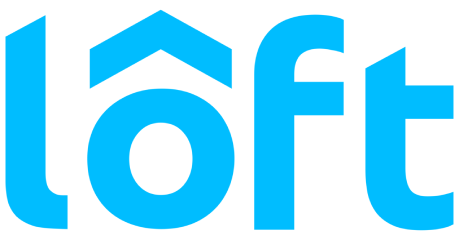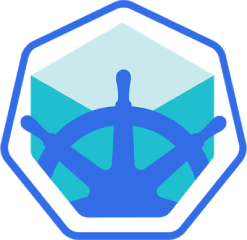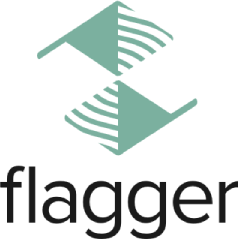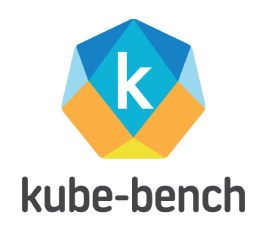Best Kubernetes Tools: The Complete Guide
There are several Kubernetes tools that help you automate processes to ensure your deployments and workflows are optimized.
Join the DZone community and get the full member experience.
Join For FreeKubernetes is the market leader when it comes to the orchestration of containerized applications. It allows you to manage containers in a multi-host environment, offering workload distribution and network handling.
Furthermore, it provides a variety of features that are vital in the DevOps process, such as auto-scaling, auto-healing, and load balancing. These capabilities explain why Kubernetes is the go-to solution for most Software Engineers.
However, it is also widely acknowledged that managing Kubernetes can be overwhelming. Thankfully, there are several Kubernetes tools that help you automate processes to ensure your deployments and workflows are optimized.
This article explores various Kubernetes monitoring tools, both proprietary and open-source, that can help you get the most out of your software development projects.
Best Kubernetes Tools
Kubernetes Cost Management Tools
KubeCost
Price: Free (Open-Source)
KubeCost is a Kubernetes cost monitoring and management tool that gives you real-time reports for cost consumption with a detailed breakdown based on namespace labels, service, deployment, etc.
KubeCost also allows you to factor in external spending on cloud servers for a holistic view, as well as add alerts and notifications for cost overruns. Furthermore, you get intelligent insights to improve the cost-to-performance ratio.
Kubernetes Opex Analytics
Price: Free (Open-Source)
Kubernetes Opex Analytics is a Kubernetes cost-monitoring tool with over 400 stars on its GitHub repository. With this tool, you can track resources used by Kubernetes and get hourly, daily, and monthly trends on a per-namespace basis.
Kubernetes Opex Analytics also highlights capacities that your application workloads cannot utilize. It also provides elegant visualizations when showcasing analytics, in addition to the fact that it avails its analytics metrics to third-party visualization tools.
Pluto
Price: Free (Open-Source)
There’s no doubt Kubernetes rolls out new updates and deprecates some components within a short space of time. However, finding and updating all the deprecated API versions is a hassle.
Pluto is a Kubernetes monitoring tool that automatically finds the affected versions in your Infrastructure-as-code (IaC) repos and Live Helm releases, after which it labels them as either ‘deprecated’ or ‘removed’ to help you be proactive with depreciated APIs.
Kubernetes Deployment Tools

Loft
Price: Free and paid tiers
Loft is a deployment tool that enables you to set up self-service virtual environments for Kubernetes. This approach allows for the rapid initialization of clusters and gives you better control. With Loft, you can manage access control, security, and isolation of multiple tenants across the Kubernetes environment.
Additionally, it helps you monitor unused resources and automatically puts all such namespaces to sleep, which can help you save up to 70% on Cloud costs.

Minikube
Price: Free (Open-Source)
Minikube allows you to create a local Kubernetes cluster by creating a VM (or you can use Docker) on your machine and deploying a single node cluster on it within a few minutes.
Essentially, minikube is a great tool for testing and exploring Kubernetes since it comes with several features, such as a load balancer, dashboard, and Nvidia GPU support.
Kubespray
Price: Free (Open-Source)
Kubespray is a management tool that allows you to deploy Kubernetes clusters on AWS, GCE, Azure, and Bare Metal servers. It consists of Ansible playbooks, inventory, and provisioning tools that handle Kubernetes cluster configurations.
For instance, Ansible allows you to run highly available clusters across multiple platforms.
Okteto
Price: Free (Open-Source)
Okteto is a Kubernetes deployment tool that gives you pre-configured development environments such that if you make any changes within these local environments, they are automatically reflected on your Cloud server.
The benefit of this capability is that it accelerates Kubernetes development workflows, as you do not have to wait for CI pipelines to complete.

Flagger
Price: Free (Open-Source)
Flagger is a deployment tool that facilitates the progressive release of Kubernetes applications. Primarily, you can release updated versions of your application to a controlled and limited user base for testing purposes. If the initial deployments are successful, you can complete the release to the remaining users.
The upside of this is that you can safely roll back your application to a stable version in case of errors. It is important to highlight that Flagger uses Contour, NGINX, App Mesh, Linkerd, and Istion for this canary deployment pattern.

ArgoCD
Price: Free (Open-Source)
ArgoCD is a tool that provides declarative continuous delivery for Kubernetes that allows you to automate Kubernetes deployments and lifecycle management. The outcome is that both are auditable and easy to understand.

Flux
Price: Free (Open-Source)
Developed by Weaveworks and made open-source in 2016, Flux helps you preserve the entire state of your application in Git. You can use it to deploy apps with canaries and feature flags, as well as execute A/B tests and progressive delivery with easy rollback using Git.
Flux also enhances the audibility of your application, as everything is controlled via pull requests.
Kubernetes Monitoring Tools

Price: Free (Open-Source)
Headlamp is an open-source tool that gives you a user-friendly web UI for monitoring your Kubernetes clusters. You get all the functionality of a traditional dashboard along with the ability to extend the UI via plug-ins.
The dynamic UI adapts and displays controls according to your permissions such as delete or edit. Essentially, you can deploy Headlamp within the cluster and access it via the web browser or as a desktop application that reads settings from the kubeconfig file.

K9s
Price: Free (Open-Source)
K9s is another open-source tool that has an easy-to-use terminal UI for monitoring your Kubernetes pods. The UI displays real-time information, and you can interact with it via certain commands.
K9s display all cluster metrics and RBAC roles in addition to allowing you to run cluster management commands. It even comes with different skins to change the look and feel of the UI.

Lens
Price: Free and paid tiers
Lens is a desktop application available for Windows, Linux, and macOS that provides an IDE for Kubernetes.
It allows easy navigation between Kubernetes clusters without using any kubectl commands and provides real-time statistics and logs. The interface displays errors and warnings that you can expand to check details.

Falco
Price: Free (Open-Source)
Falco is an activity monitoring tool that detects unusual usage patterns within Kubernetes. The project was initially started by Sysdig and is now a CNCF-incubated project. With Falco, you can detect anomalous activity involving Linux system calls and get immediate alerts.
Furthermore, it enables you to define rules for containers, hosts, and networks and then notify if any system call goes against those rules.

Kube-bench
Price: Free (Open-Source)
Kube-bench is an open-source monitoring tool that checks whether a Kubernetes deployment is secure by running the checks documented in the CIS Kubernetes Benchmark. The tests are defined in a YAML file, which makes them easy to upgrade with the specifications.

Kube-hunter
Price: Free (Open-Source)
Aquasecurity’s Kube-hunter is designed to probe security vulnerabilities in Kubernetes clusters. It increases the visibility of security threats and allows you to address the issues before any harm is done.

Open Policy Agent (OPA)
Price: Free (Open-Source)
Open Policy Agent (OPA) is an open-source policy-making engine that unifies policy enforcement across several cloud-native environments, including Kubernetes.
It provides a high-level language that allows you to declare custom policies as code and integrate them into your service. This provides you with security management flexibility and finer control over the cloud service.
Command Line Utilities
Kubectx/Kubens
Price: Free (Open-Source)
Kubectx and Kubens are command-line tools found under the same repository on GitHub. Kubectx allows quick switching between contexts (clusters) on Kubectl. On the other hand, Kubens allows you to switch between Kubernetes namespaces with a few commands.
A key point to highlight is that from version 0.9.0, both of these tools have been rewritten in Go although the Bash implementations still exist.
Conclusion
Kubernetes is a powerful orchestration tool, and it goes without saying that it has revolutionized modern cloud computing. As its adoption continues to grow, so does the demand for advanced and effective tools for the management and monitoring of Kubernetes clusters.
This guide highlights some of the key features associated with the leading Kubernetes tools in the market that cater to various use cases, mainly cost management, deployment, and monitoring.
At the end of the day, the final decision on the most suitable Kubernetes tool for your software projects rests on your company’s specific needs and project goals.
Published at DZone with permission of Florian Pialoux. See the original article here.
Opinions expressed by DZone contributors are their own.

Comments